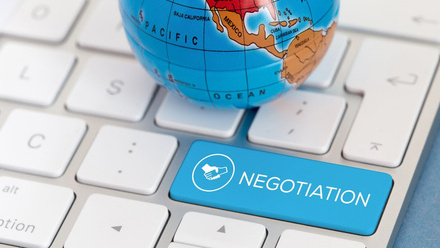Price points
Susie Jackson argues for more nuance when we're talking about 'acceptable' per-word rates for translation, while Jason Willis-Lee believes that value should always come above price.
As a pricing mentor, it makes me very happy when I come across discussions about pricing in online translation communities. These increasingly centre around one topic in particular: the poster complains that they have been offered what they see as an unacceptable rate for translation and explains that they told the client that in no uncertain terms. There are usually comments from plenty of other translators, agreeing that the rate on offer was shameful and congratulating the original posteron taking a stand.
I understand that if you're a UK-based translator who has an MA, is an MITI, and has years of experience, it can feel disrespectful to be expected to work for £0.03 per word. And I've definitely noticed a trend towards agency clients wanting to pay less and less to their freelance translators. But I believe that the conversation around 'acceptable' per-word rates for translation needs to be more nuanced...
Averages are not always the answer
The overwhelming majority of translators I speak to set their rates by looking at 'average' industry rates published on platforms like ProZ.com. They use these to judge whether the rates they are offered are acceptable or not. But I'd argue that even charging those average rates is no guarantee that a translator will be able to earn a decent living from their business. The only way to ensure that is to set your prices based on your financial needs and your capacity for paid work.
Many UK-based translators will probably find they need to be charging more than average for their services when they calculate their rates in this way.
If even these average rates are too low, an offer of a per-word rate that's half the average is unacceptable, surely? To this particular translator, yes. But the translation industry is global, and just as a UK-based translator might need to charge higher-than-average prices to make their business financially viable, someone based in a country with a lower cost of living might find £0.03 per word meets their needs.
Of course it's problematic if average prices for translation are on a downward trend. But I firmly believe that there are clients out there at every budget level. In any industry, a wide range of prices is normal. I often use the example of paying for a spa day for yourself or a loved one. When I poll participants in my pricing workshops, I usually get some respondents who say they wouldn't pay anything at all for a spa day, whereas others say they would be willing to pay over £250. If I open a luxury spa with top facilities and I've calculated I need to charge £250+, there's no point in targeting the clients who value that experience at £50. The same is true for translation.
Find the clients who can match your terms
If you calculate that you need to charge higher than average, it's up to you to identify the clients who are likely to be able to pay your rates. In many cases, they might not be agencies. Or you might have to broaden your search to countries with a higher cost of living. Just as translators based there are likely to have to charge more, the clients based there are likely to have higher budgets.
When you set your prices based on your financial needs and capacity, and you get in the habit of tracking your time, you can judge any offer that comes your way based on cold, hard numbers, without letting emotion get in the way. A per-word rate of £0.03 might sound terrible to you, but if you know you need to be earning £30 per hour of paid work for your business to be viable, and this particular document is something you've translated many times before, you may find that this time you can take it on. If you can't, it may in fact work out OK for someone who works faster than you or does not need to bring in so much per hour.
So I would caution against making sweeping statements about 'acceptable' rates. All we can judge is whether a rate is acceptable to us at a given moment, and to do that we need to have a good grasp of our business's finances.
Susie Jackson
Pitching for price point perfection
'Raise your pricing game,' they all cry. It's a popular mantra, isn't it; and it's also a well-subscribed topic. Boy oh boy, do I see a lot of colleagues jumping on the bandwagon at every translation conference event I apply to speak at or, can you believe it, even in journal articles. Truth be told, I even hear about it on some podcasts. After all, robust pricing leads to robust money, and we all like to follow the robust money. Well, don't we?
So what makes me different when talking about pricing? What's my USP? How do I differentiate myself from my competition and stand out above the jostling crowd? It's a good question; and it's not so easy to answer, of course. I see the usual common-sense advice to raise your rates for clients one at a time rather than burn all your bridges at once; adopt a 'wait and see' approach; play around with budget cycles; and consider raising fees outside the usual calendar months like January and September. That's all well and good. But whichever way you cast your dice, pricing is a sensitive and tricky topic.
Purple cows (no colouring in required this time)
Here are five signs in no particular order that you have a poverty mentality in business:
- Not charging enough for your translation service or product
- Offering a discount just because someone asks for one
- Giving a discount before you are even asked for one
- Difficulty speaking out and asking for what you want in a negotiation
- Fear of losing customers overnight if you raise your prices.
Do you recognise any of these in yourself or your business? And even more importantly, how do you tackle the mentality that underpins them? Personally, I tend to go in for a straight no-nonsense focus on the price-to-value ratio. Ask yourself: how do people make their purchasing decisions? Answer: value must always stay above price and in practice, although it might sound counterproductive, you need to give people so much value for money that they are getting more than they paid for. Because that is the way to get repeat sales. Most mediocre businesses are below that point, only make one sale per customer and have to continually find new ones (no fun at all).
Repeat business has to be exceptional and remarkable. Something worthy of making a remark about: what marketing influencer Seth Godin terms a purple cow. So good that people talk about you.
So how do you do it? Before you all rush out and start colouring your cows purple, here are two ways to alter the price-to-value ratio. You can do it the hard way: lower the price. But remember, here you can only go down to zero. Or you can do it the easy way: increase the perceived value to customers and prospects, which means you can go infinitely high. This second option just sounds so much cooler, doesn't it?
Raise your game (and read, read, read)
So what are my personal top tips for raising your pricing game? First of all, read as many marketing books as you can lay your hands on. One of my top recommendations, just based on current radar antennae, is This is marketing by Seth Godin but basically you can read anything written by Seth. He has around 20 published books now, I believe. Take a close gander at Tribes and Purple Cow while you're at it. And on top of that, listen to as many marketing and pricing podcasts as you can get your ears close to. Here are three for starters: The pricing Lady with Janene Liston; Marketing with Brendon Burchard (he also has another called Motivation which is worth it if you can fit it in too); and Tum yourself into a booked out freelance translator (full disclosure: this one is hosted by your author).
By the way, did you know you can even become a certified pricing professional with the Pricing Society? I nearly choked on my profit playbook when I read that one. I guess you can become certified in most anything these days... I'm not sure I would take things quite that far but pricing does seem to be very much the easiest way to improve your bottom line if used skilfully as a conscious business strategy.
In its way, it's just like devising your conscious spending plan when drawing up a budget. Spend wildly on things you love and cut back mercilessly on things that, well, are just not that important. But of course you need to be in a pretty strong position to start with so you don't have to constantly lower your fees just to make deals. That's just a race to the bottom. And that's not good for any of us.
Jason Willis-Lee
This article first appeared in the March-April 2023 edition of ITI Bulletin.
Never miss another Bulletin article

If you would like to read more features and articles on a wide variety of subjects relating to all aspects of the translation and interpreting industry, subscribe to ITI Bulletin. Alternatively, join ITI and get a free subscription included in your membership.






